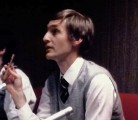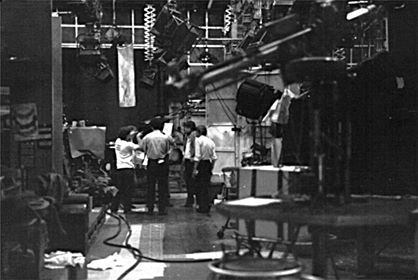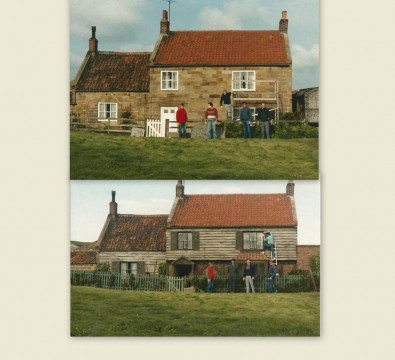Why was “6.55 Special” made in Radio Studio 1?
When the lunchtime programme Pebble Mill at One was first broadcast it was “serviced” by the galleries and cameras of the two proper TV studios at Pebble Mill. Studio A on a Tues and Friday, while the studio was being reset between dramas etc (“All Creatures”, “Basil Brush”, “Great Expectations” etc) and Studio B on a Mon, Wed and Thurs, because its cameras could be re-rigged back from the Foyer in time for the evenings “Midlands Today”.
PM@1 was only on the air Sept to mid May, so for the whole summer the production staff were potentially under-utilised. So in 1982? (not sure when) 6.55 Special was sold to BBC2, a weekday early evening live entertainment and chat show, 6.55-7.30 (I think).
But it couldn’t use the existing studios which were incredibly busy in the evenings.
And that is why Radio Studio 1 (the one used for classical recitals etc) was turned into a TV studio, with an audience rostra and a permanent set with a sofa chat area (seen in the photo for the 6.55 Special post) and a stage as performance area. The sound was mixed in the radio sound control room, where the mobile lighting control desk was also rigged. The “lightweight” OB scanner CM2 was parked outside just off the fire track and used as production and vision control, with VT as well played from the scanner, but also connected up to Pebble Mill’s VT area.
Eventually when the Standby TV Network Continuity Suite needed refurbishing, the area was re-modelled as a full TV gallery – Gallery C (not sure the date but early 80’s).From then on Pebble Mill @ One or any of it’s spin offs came from that discreet gallery, but before then the studio equipment at Pebble Mill was some of the most utilised kit in the whole of the BBC!
6.55 Special moved into the courtyard after the famous movable roof was installed. And that is why for the first series, at least, 6.55 Special came from a radio studio.
Mark Kershaw

Mark Kershaw directing Pebble Mill at One



